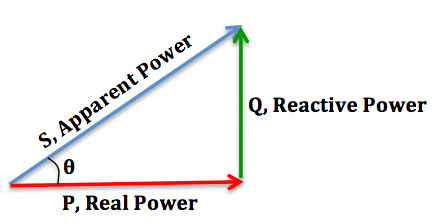Introduction
Electrical engineering principles are crucial when conducting industrial energy assessments. Understanding these concepts can greatly enhance your ability to identify energy-saving opportunities. This primer introduces key electrical fundamentals applicable to energy assessments, including power factor, three-phase power, motor efficiency, and other related concepts.
1. Voltage, Current, and Resistance
- Voltage (V): The electrical potential difference, measured in volts, drives current through circuits.
- Current (I): The flow of electrons, measured in amperes (amps, A).
- Resistance (R): Opposition to current flow, measured in ohms (Ω). Ohm’s Law relates these concepts:
\[ V = IR \]
2. Power
Electrical power quantifies the rate of energy use, measured in watts (W). Real power (P) represents actual energy consumed by equipment.
- Real Power (P): Actual usable power, measured in watts (W).
- Reactive Power (Q): Power stored temporarily and returned to the source, measured in volt-amperes reactive (VAR).
- Apparent Power (S): Combination of real and reactive power, measured in volt-amperes (VA).
The relationship between these powers is described as:
\[ S^2 = P^2 + Q^2 \]

3. Power Factor
Power factor (PF) indicates how effectively electrical power is being utilized. It is defined as the ratio of real power to apparent power. \[ PF = \frac{P}{S} \]
- A power factor close to 1.0 (unity) is ideal. A low power factor (often caused by inductive loads like motors) results in inefficiencies and higher electricity charges.
- Improving power factor (via capacitors or power factor correction equipment) can reduce energy costs.
4. Three-Phase Power
Three-phase power is commonly used in industrial environments due to its efficiency in power distribution.
- Line Voltage (\(V_L\)): Voltage between any two phases.
- Phase Voltage (\(V_P\)): Voltage across a single phase, measured between phase and neutral.
- Line Current (\(I_L\)): Current in the transmission lines.
For a balanced three-phase load, the total real power is calculated as: \[ P = \sqrt{3} \times V_L \times I_L \times PF \]
5. Motors and Motor Efficiency
Electric motors are major energy users in industrial settings. Motor efficiency indicates the effectiveness of converting electrical energy into mechanical work.
- Motor Efficiency (η) is defined as: \[ η = \frac{Mechanical~Power~Output}{Electrical~Power~Input} \]
- High-efficiency motors minimize electrical losses and significantly reduce operational costs.
Common causes of low motor efficiency:
- Oversizing motors relative to load requirements
- Poor maintenance
- Running motors unnecessarily or at inefficient loads
Strategies to improve efficiency include installing properly sized motors, scheduling maintenance, and using variable frequency drives (VFDs).
6. Variable Frequency Drives (VFDs)
VFDs control motor speed and torque by varying frequency and voltage of the supplied electricity, allowing motors to operate efficiently at varying loads. Benefits include:
- Improved energy efficiency and reduced energy consumption
- Enhanced motor control
- Extended motor lifespan